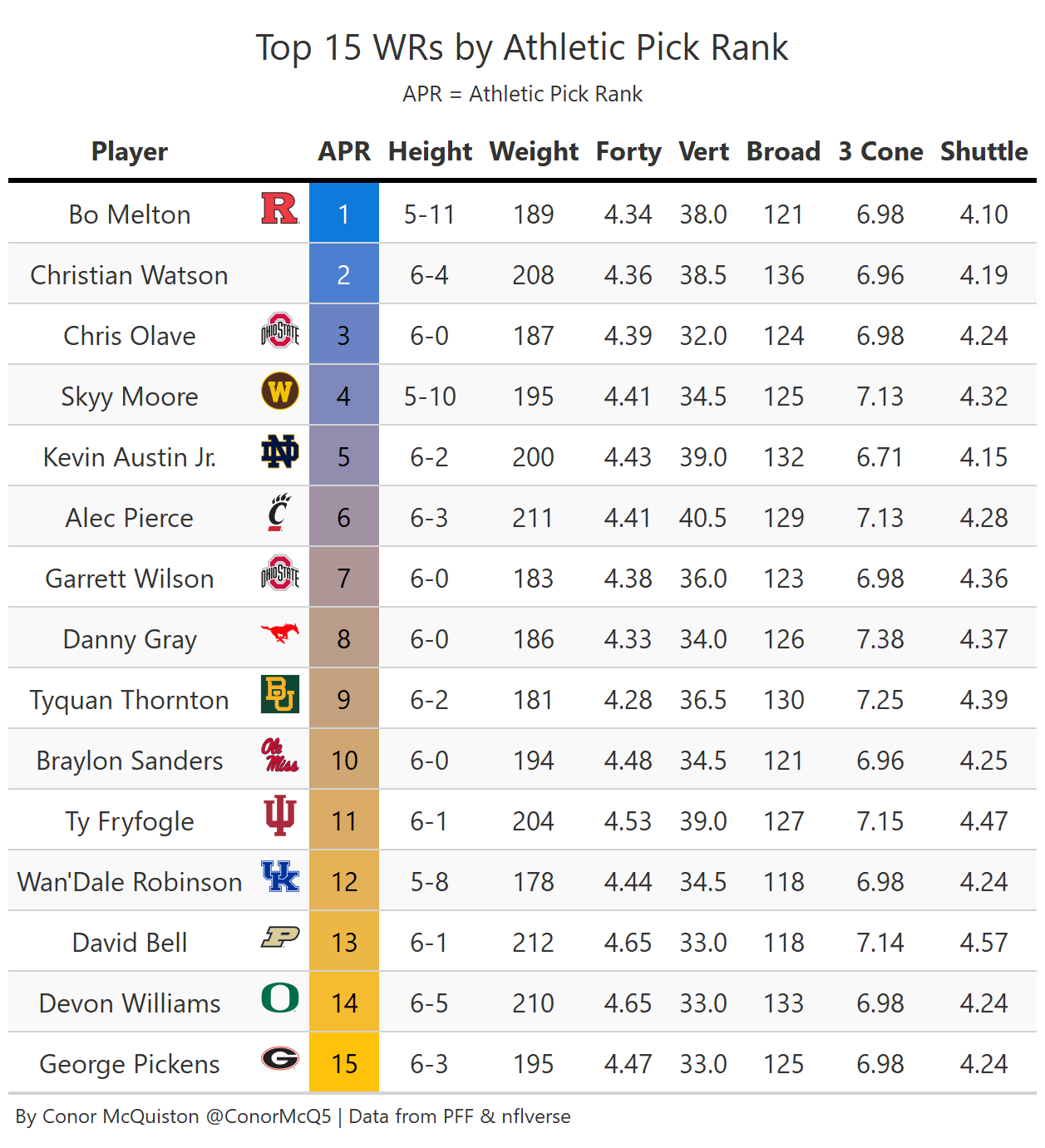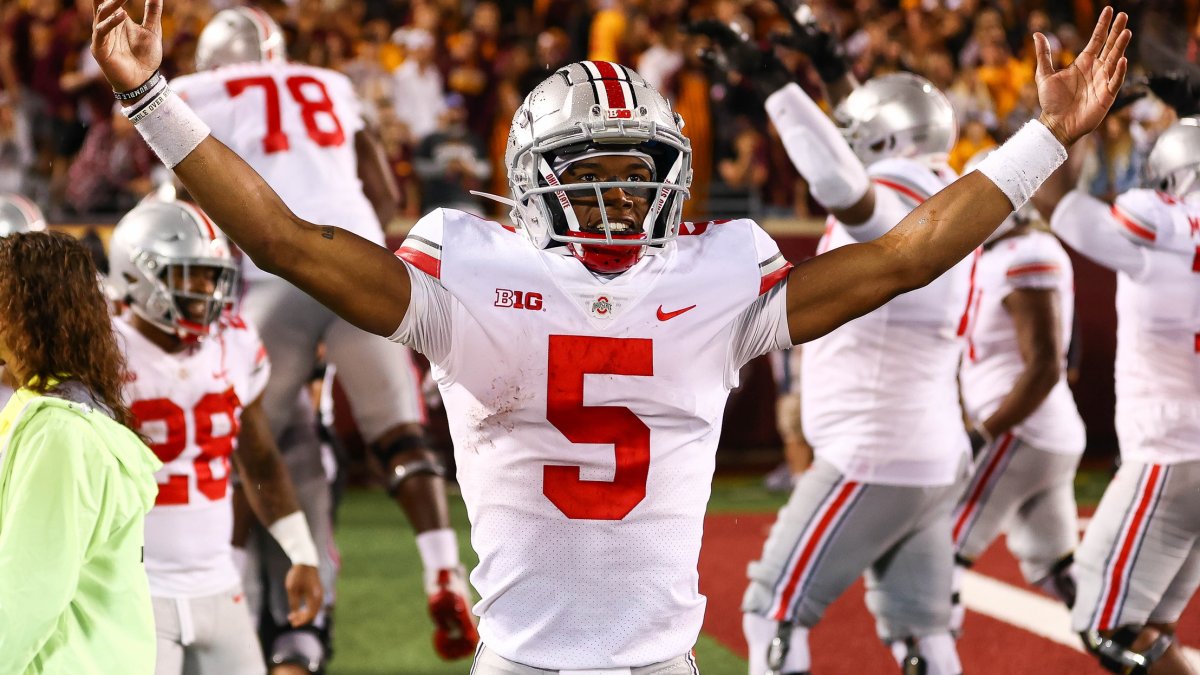In the run-up to the 2022 NFL Draft, we'll be predicting the draft order for every non-quarterback or specialist position based on their athleticism numbers and final-season college production.
The goal of this series is to identify players with similar athleticism and production profiles to those who are historically drafted early. This gives us some indication of the type of player the NFL prefers to pick early. Additionally, separating production and athleticism numbers allows us to categorize players as producers or athletes, which may yield insight into their potential NFL success.
Note that while the target variable of our modeling was draft pick number, we will only be reporting the rank relative to the wide receiver’s draft class. This is because there are too many externalities for why a player is selected when they are, such as the relative strength of the draft class, individual team needs and team measurable thresholds, for the prediction to be well-calibrated. However, by looking at a player’s rank, we can get a better idea of how they stack up relative to their peers.
Athletic testing numbers come from the NFL Scouting Combine, and when possible, missing data was filled in with pro day measurements. If a player did not participate in more than three drills across the combine and their pro day, they were excluded from the dataset. For the wide receiver class, that excludes Drake London and Jameson Williams, among others.
If a player qualified for the dataset, their missing events were assumed to be the position average over the past five combines. These measurements and times were then thrown into a random forest model to handle potential nonlinearities and complex relationships between variables to predict draft position.
The players predicted to be picked early by the model skew heavily toward faster, quicker, more explosive receivers — regardless of their size. This reflects the NFL’s general adherence to the adage “You can’t teach speed” above all else at the wide receiver position.

We also modeled draft position strictly based on production metrics charted by PFF, also in a random forest model to handle nonlinearities. The inputs included both rate metrics, such as yards per route run and drop rate, as well as volume metrics, such as receptions and targets. We also added an indicator for whether the player was in a Power Five conference since strength of competition is meaningful for NFL evaluators.




 © 2024 PFF - all rights reserved.
© 2024 PFF - all rights reserved.